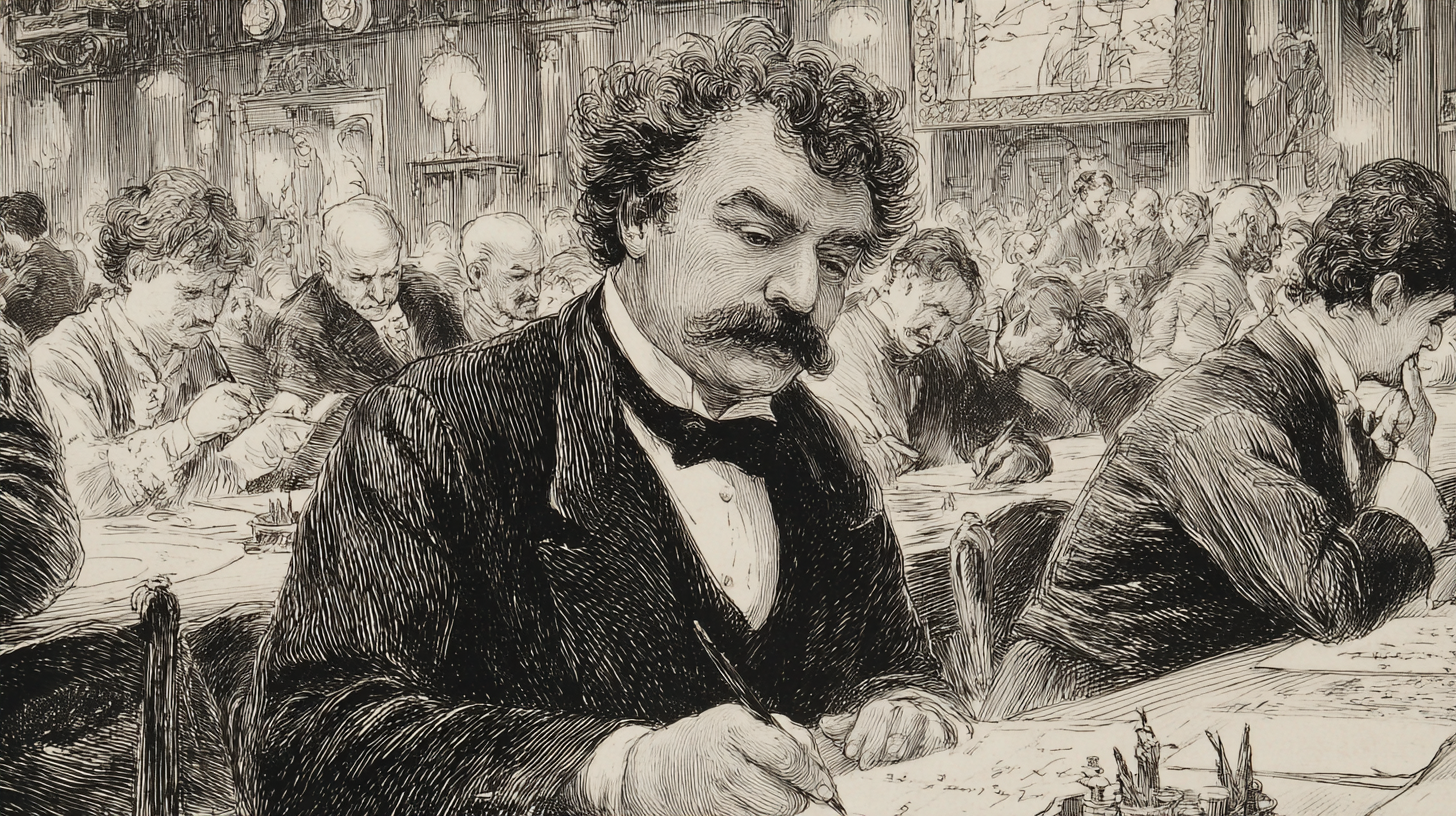Alexandre Dumas created The Three Musketeers and dozens of other classics, but he wasn't some lone genius toiling away in isolation. Instead, Dumas built a remarkably efficient book-writing system - almost like an assembly line - powered by his assistants' groundwork. His approach looks surprisingly relevant for anyone working with AI today.
Dumas was a force of nature in French literature. Over roughly forty years, he produced 257 novels, memoirs, and short stories, plus 25 plays. Between 1870 and 1894, publishers printed three million books and eight million serialized novels under his name. For half a century, Europe treated him like literary royalty. His books were read from Cairo to Moscow, Istanbul to Chandigarh, with ships crossing the Atlantic loaded down with his latest works.
He started with nothing and achieved everything imaginable. Dumas made a fortune, which he promptly spent on lavish parties, travel, fine wines, extravagant flowers, and the crowd of friends, lovers, and hangers-on who filled his castle. He lived large - earning ten million and burning through twenty. He fought duels, climbed barricades, chartered ships, and handed out pensions from his own pocket. At the end of his life, he died peacefully, all thanks to his writing.
So how did he manage it? How did Dumas produce something worth reading every single week, even as publishers demanded more and more at breakneck speed? The answer is simple: he had help.
A Team of Fifty-Two
Dumas worked with fifty-two assistants who helped write his books. The most important was Auguste-Jules Maquet, who collaborated on 19 novels including The Count of Monte Cristo and all three Musketeers books.
Working with Dumas brought Maquet fame and fortune, but on his own, he was mediocre at best. Critics who've read his solo work dismiss it as unoriginal, with flat characters, lifeless dialogue, and predictable plots. Nothing he wrote without Dumas survived him.
For this assembly-line approach, Dumas developed a three-step process: concept, draft, and polish. First, he'd create a detailed outline and give it to his collaborator. Maquet would then research and write a first draft, which he'd send back to Dumas for the final rewrite - sometimes just tweaking, sometimes overhauling the entire manuscript.
Dumas used his storytelling instincts to transform Maquet's rough drafts into page-turners. He injected momentum and depth, built suspense and humor, added vivid details, reshaped characters, and sharpened dialogue. Under relentless pressure from publishers, he kept the pages flowing.
Dumas mastered the art of producing sophisticated texts at speed because he understood two key principles: first, anyone writing lots of quality material under pressure needs to divide the work intelligently. Second, the real magic doesn't happen in the first draft - it happens at the beginning when you're forming the idea, and at the end when you're polishing the rough material.
A Model for Human-AI Collaboration
With generative AI tools, Dumas's method feels more relevant than ever. Give an AI clear instructions with good examples for format, style, and tone, and you'll get reliable drafts in seconds - solid rough versions, about 80 percent of the way there, that you can quickly build on. Essentially, Maquet-level work.
This lets us delegate the labor-intensive middle step to machines while focusing our energy on what really matters: the core concept and the creative refinement.
Critics still argue that AI writing is too generic, bland, or clichéd. Right now, they're only partly wrong. AI first drafts aren't perfect - but first drafts never are. As Hemingway famously said: "The first draft of anything is shit." The real difference between mediocre and good comes from steps one and three - the planning and the polishing.
At the end of the 19th century, automobile pioneer Gottlieb Daimler believed there would never be more than a million cars worldwide. The machines were too difficult to operate and required trained drivers, of which there weren't enough. Today's equivalent objection might be that quality writing at scale won't become common practice because there aren't enough Maquets to go around. But the arrival of the Maquet machine suggests otherwise.





